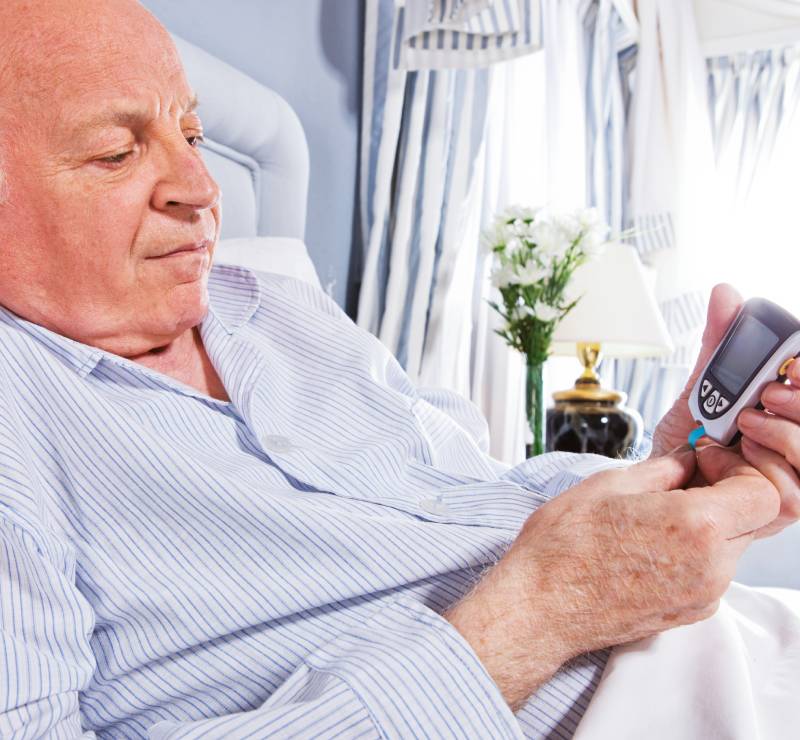AA

Half of all diabetic patients are over 55. It is also the leading cause of blindness in adults and leaves seniors twice as likely to be hospitalized for kidney infections.
Our body converts the food we eat into glucose. Insulin, produced naturally by our body, helps glucose get into our cells where it’s used to make energy. If one’s body does not make enough insulin this usually means that the person has diabetes.
Early diagnosis is very important. Once the disease has progressed, some common symptoms are:
Increased thirst
Frequent urination
Extreme hunger
Unexplained weight loss
Frequent infections
Slow-healing sores
Feeling lethargic
Decreased circulation
Some tests for Diabetes include:
Glucose tests randomly throughout the day
Glucose tests done fasting ( 8 hours without food)
A1C Blood test which tests for the past 2-3 months
Oral Glucose test taken after fasting 8 hours and then 2 hours after a sugary drink
It is important to note here that there are 2 types of Diabetes:
Type 1 – where the body makes little if no insulin. This usually happens in children and young adults.
Type 2 – where the body makes insulin but doesn’t use it properly. This is the most common type of diabetes. Chances of having Type 2 are higher if you are overweight, inactive, or have a family history of diabetes. It’s important to keep this type of diabetes under control. Type 2 diabetes increases the risk of Alzheimer’s disease, heart disease, stroke, kidney disease, blindness, nerve damage and circulatory problems.
Some of the ways to help adjust lifestyle with Diabetes are:
Ensure that the person affected sees their doctor regularly to talk about their diabetes management and for tests of their blood pressure, cholesterol and eye health
Engage the person’s pharmacist or dietician, as they will be able to offer helpful tips to manage diabetes
Know the signs of low blood glucose. They can be similar to dementia, like confusion or disorientation. If they have signs, test their blood immediately, it is better to be cautious.
Make sure the senior person is getting well balanced meals. Healthy eating is very important managing diabetes. If they are unable to cook on regular basis, arrangements for freshly prepared healthy meals to be delivered to their homes is of utmost importance.
Developed a routine for exercises, resistance training and aerobics. These exercises have been proven to improve blood glucose levels.
Proper foot care is imperative. Check their feet regularly for cracks, cuts, or ingrown toenails. This may be difficult to monitor for their family doctor as intervals of clinic visits may be long in some cases.
Have a family member take responsibility for monitoring the health of the senior. Importantly, make sure that they are aware that there is always support available when needed.
In older adults, diabetes is also associated with a risk of cardiovascular and microvascular complications, dementia, depression, vision and hearing problems, nutrition problems, and in extreme cases even loss of limbs.
Seniors can control and manage diabetes fairly easily by making lifestyle changes. If overweight, the best way is gradual and permanent weight loss by decreasing calories and increasing exercise. Make small and steady changes, start by cutting out dessert and avoiding second portions. Increase your vegetable, fruit, and whole grain intake as they are high in complex carbohydrates. Decrease your red meat and sugar intake, avoid alcohol, and start walking (on a treadmill, outdoors or on an indoor track). If diet and exercise do not work, then medication are an alternate option to manage diabetes.
